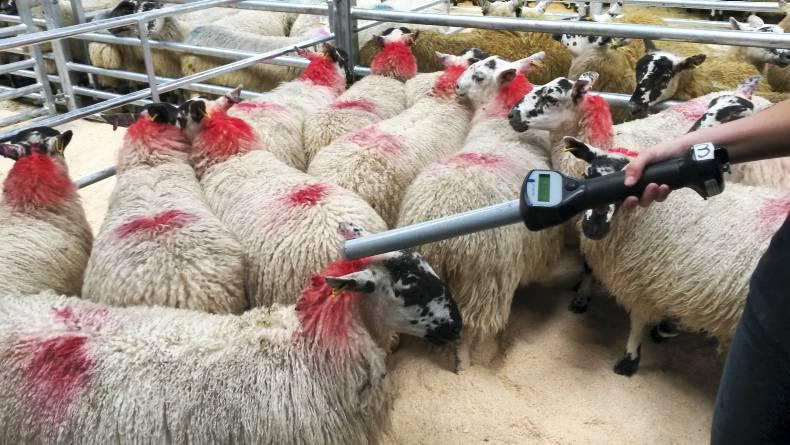New rules were introduced in Northern Ireland at the beginning of 2010 regarding the identification and movement of sheep. Compulsory use of electronic identification (EID) tagging was the most notable change for the industry.
All sheep in Northern Ireland are required to have two tags – an EID tag as well as a conventional tag – with corresponding flock and individual tag numbers on each. Lambs are now required to be identified with the two tags before they turn nine months of age or on leaving the holding, whichever is sooner.
The Department of Agriculture and Rural Development (DARD) states that the new rules were brought in to make it easier to trace animals, with the aim of helping to prevent or reduce the implications of a major disease outbreak.
Once a sheep is tagged, there is no need to retag the animal as it moves between flocks, unless it loses a tag. If a tag is replaced for a sheep that was not born on the current owner’s farm, then a red tag has to be used to identify this. Otherwise, EID tags are always yellow and the corresponding conventional tag can be a range of colours.
There is also the option of an EID bolus and then a single conventional tag that has to be a light blue colour, but uptake for this method has been lower among farmers.
There is a range of DARD-approved tags manufactured by different companies. Pairs of tags start from £0.95 (€1.35/kg), including VAT, but most farmers go for tags around £1.19 (€1.70). The old system was a single conventional tag that cost £0.20 (€0.28) to £0.30 (€0.43), on average.
Shaun Irvine, auctioneer at Ballymena mart, says that other than the increased price of the EID system, farmers are generally happy enough with the new tagging arrangements.
“We provide farmers with a printout with the tag numbers of all the sheep they are selling. Then, after the sale, a printout shows how many sheep a farmer bought, as well as each individual tag number that is to be transferred into their flock,” Shaun said.
Marts, abattoirs and export assembly centres are known as central points of recording (CPR). This means that a farmer does not have to record any tag numbers if moving sheep through one of these facilities as all sheep tags are scanned with an EID reader.
Selling sheep privately has caused some inconvenience for farmers however, as all individual number have to be read manually unless the farm owns a handheld scanner, which is not the case for the majority of flock owners.
Most marts scan sheep with handheld EID readers before the sale in the pens the sheep are being sold in. This is because using a race reader at intake points only delivers a reliability average of 95% of sheep scanned and, once the sheep leaves the race, it is impossible to know the tags not scanned. Scanning with handheld wands in a race is less popular as it can lead to a backlog and queues as farmers wait to offload sheep before a sale.
Daniel McAlister, auctioneer at Armoy livestock market, says that Armoy has an EID chip in each pen, so the mart worker can scan this before they start scanning the sheep in the pen. That way, the whereabouts of each sheep is known.
Tag numbers are then uploaded to APHIS, DARD’s livestock registration and movement service. Each animal that enters the mart has to be linked to a destination afterwards through the system.
“The biggest problem for marts is tags that do not scan with the EID reader. This means we have to read the flock and tag number manually; it takes more time and increases the likelihood of making a mistake, which is something that might not be caught until the farmer who buys the sheep that day sells them again, which could be a long time away,” said Daniel.
Daniel also said that older tags tend to be more difficult to pick up with the scanner and that there has been a difference in reliability between tag types, although this has improved between manufacturers recently.
Richard Beattie auctions at Lisahally, Gortin, Pomeroy and Draperstown marts. He maintains that there has been increased expense for mart owners in buying and maintaining a computer system and paying extra labour because of the new system.
“We have to employ a lot more staff than before and we have to start penning and scanning sheep a lot earlier before the sale starts with the new EID tags. It is a good system and works well most of the time but once an issue with computers starts, it can really just stop everything on the day,” he said.
Read more from the Mart Price Focus here.






 This is a subscriber-only article
This is a subscriber-only article












SHARING OPTIONS: